In partnership with Football Meta, we
examine how Vincent Kompany’stactics at Bayern Munich have created one of the most formidable offensive attacks in European football.
In this tactical analysis of
Bayern Munich, we will look at their recent performances, which have showcased a unique 2-4-4 offensive structure.
This structure has allowed Bayern to average five goals per game while demonstrating dominance over their opponents.
You can watch the full video from Football Meta below.
The key to Bayern’s success lies in their aggressive 2-4-4 formation, which allows them to envelop the opposition and transition seamlessly between different tactical shapes.
Under the guidance of Vincent Kompany’s tactics, Bayern Munich has evolved tactically, silencing earlier Kompany doubters who questioned whether the former Burnley man was up to the job.
Bayern Munich 2-4-4 Formation: A Tactical Overview
Bayern Munich’s approach begins with a unique 2-4-4 shape when in possession.
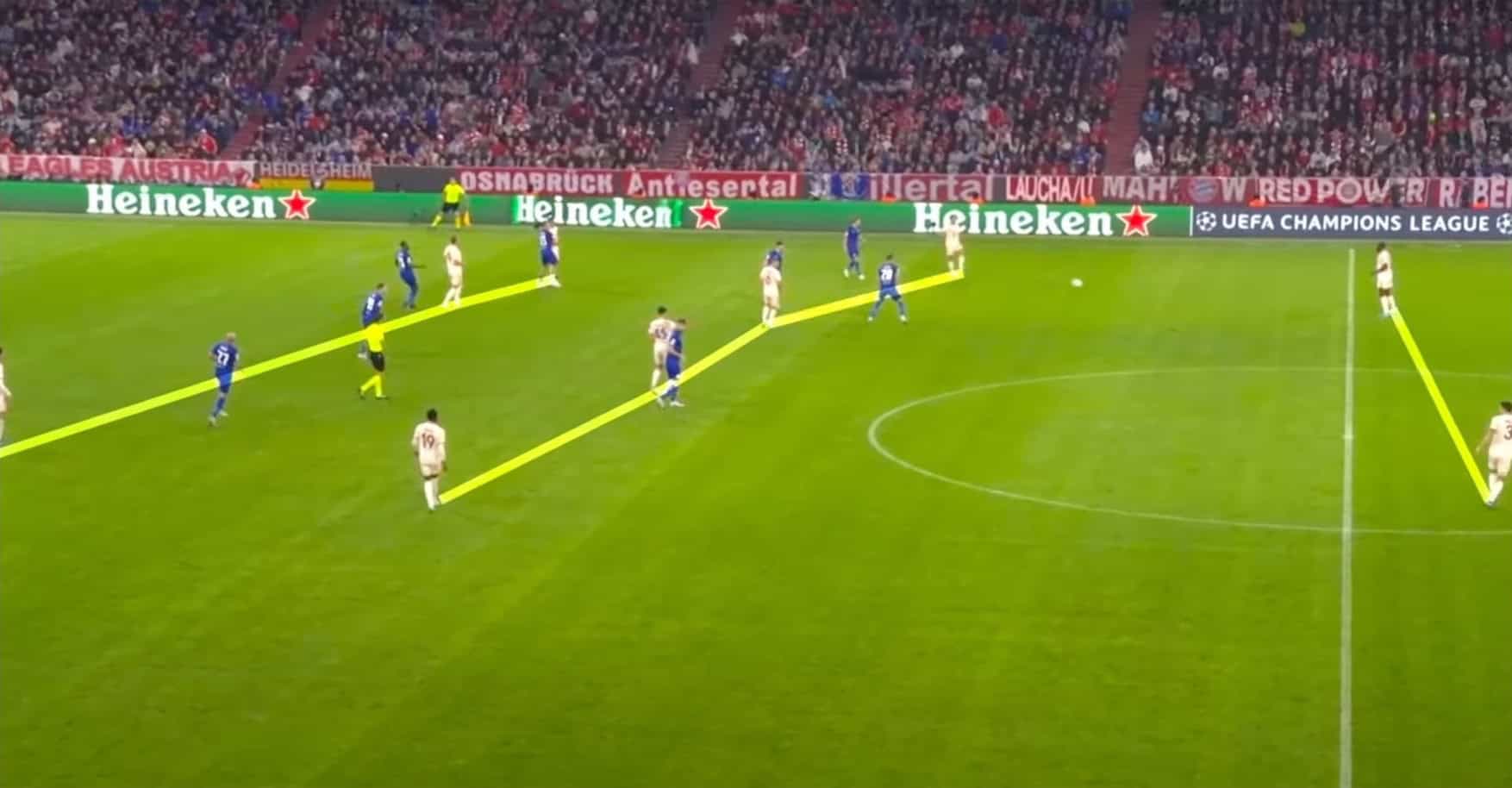
This formation emphasizes ball retention in the opponent’s half, often negating the need to break through pressing defences.
The active involvement of the goalkeeper provides an additional player, allowing for quick transitions and creating imbalances in the opponent’s defensive line.
This 2-4-4 structure enables Bayern to start attacks from higher up the pitch, supported by players like Thomas Müller and Harry Kane, who drop into the spaces between the lines.
3 Key Components of Bayern’s Attack
Bayern’s tactics revolve around three main components that facilitate their offensive effectiveness:
Winger and Fullback Dynamics:
The positioning of the fullbacks in the half-spaces allows for fluid ball circulation.
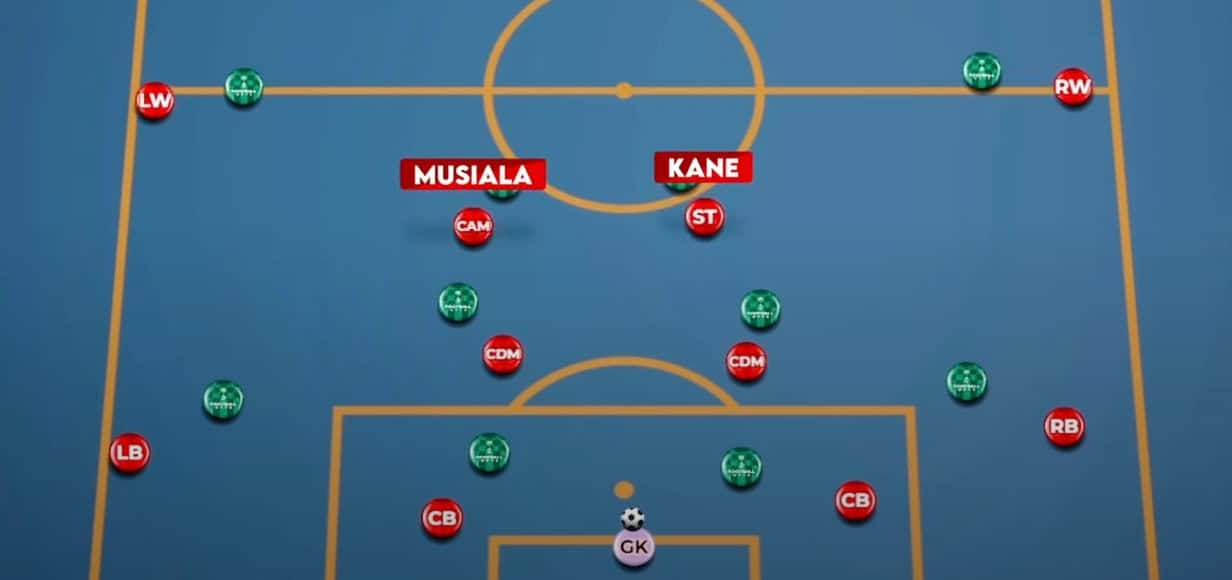
If the opposing team overcommits to closing these players down, Bayern can exploit wide areas, creating one-on-one situations for their wingers.
Central Box Structure:
The fluid formation also allows Bayern to create a “box” in midfield, which provides a pivot point for attacks.
If the centre becomes congested, players like Joshua Kimmich and Aleksandar Pavlović drop deeper to receive the ball, allowing for quick rotations and the creation of space.
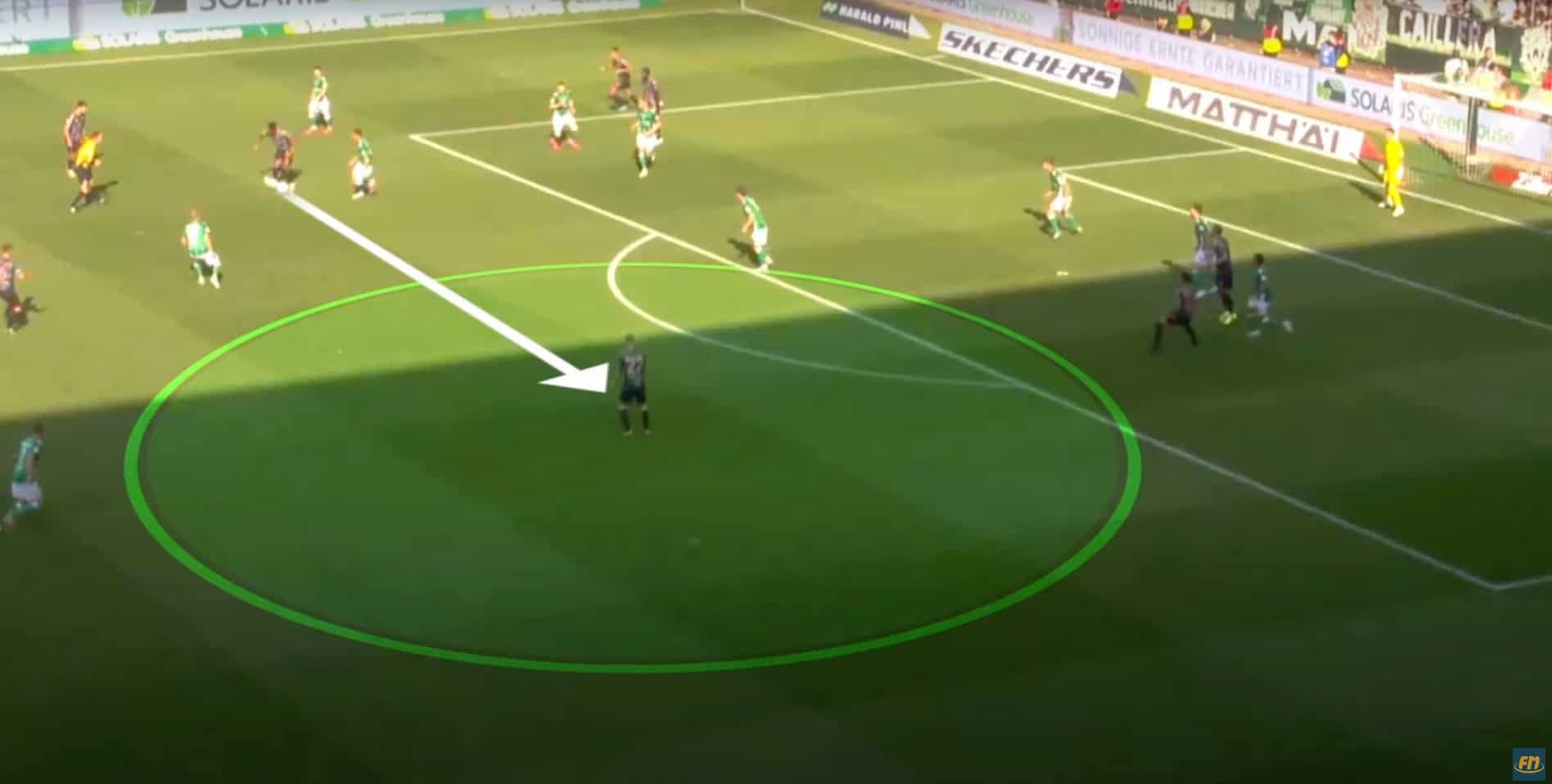
Rotational Movement:
The constant movement of players, particularly in the final third, creates overloads on specific flanks.
This fluidity not only confuses defenders but also opens up passing lanes for cross-field balls and quick strikes into the box.
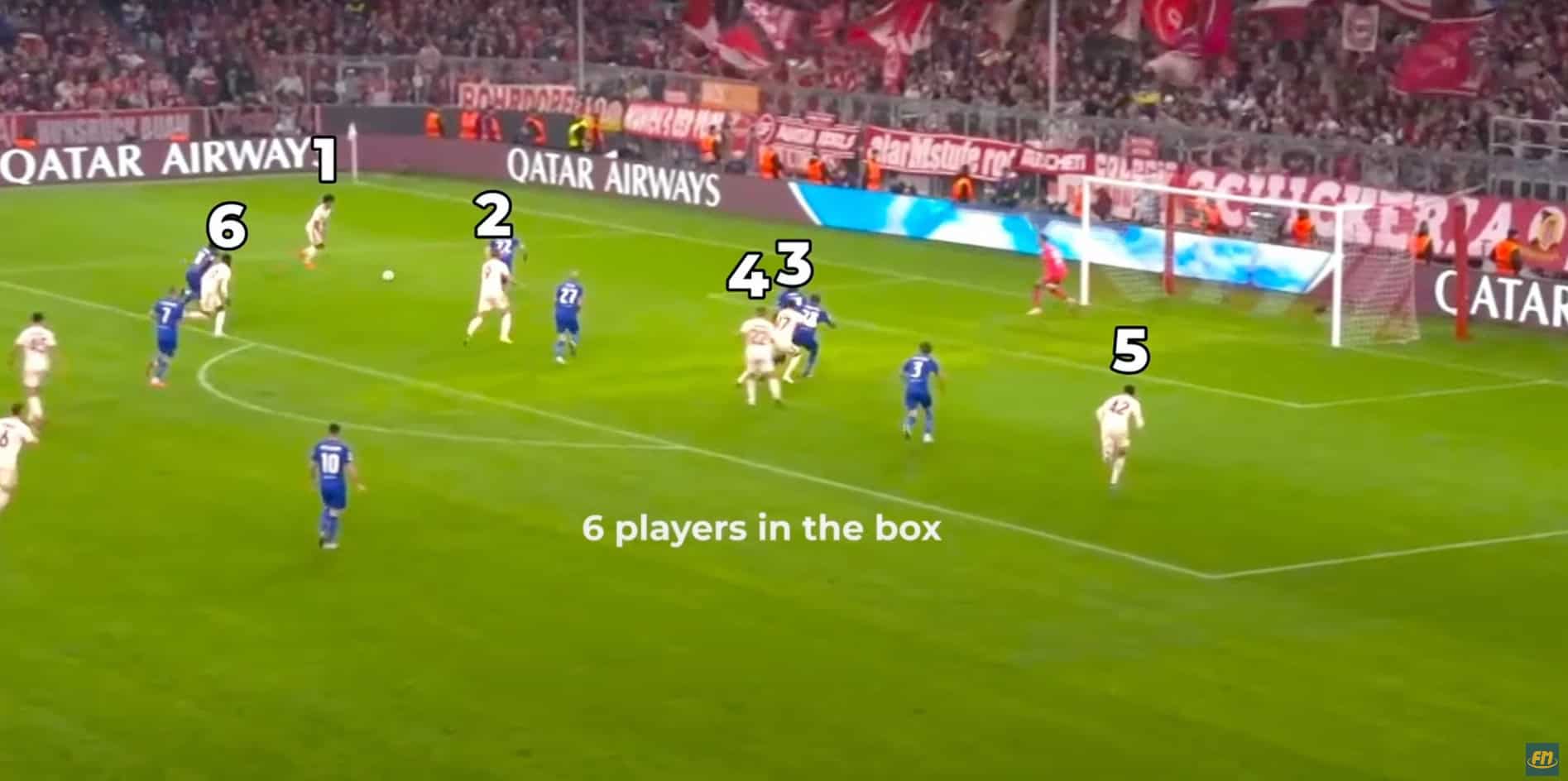
The Transition Between Shapes
Bayern’s ability to shift between formations is a crucial aspect of their play.
Starting from the 2-4-4, they can quickly morph into a 3-3-4 by having Kimmich drop deep, or transition into a 3-2-5 when fullbacks push forward.

This adaptability is vital in maintaining pressure and stretching the opponent’s defence, making it difficult for them to regroup.
Defensive Structure and Counter-Pressing
While Bayern’s emphasis on attack is evident, their defensive strategy is equally significant.
The team’s approach to counter-pressing is aggressive, with players positioned high up the pitch to reclaim possession quickly.
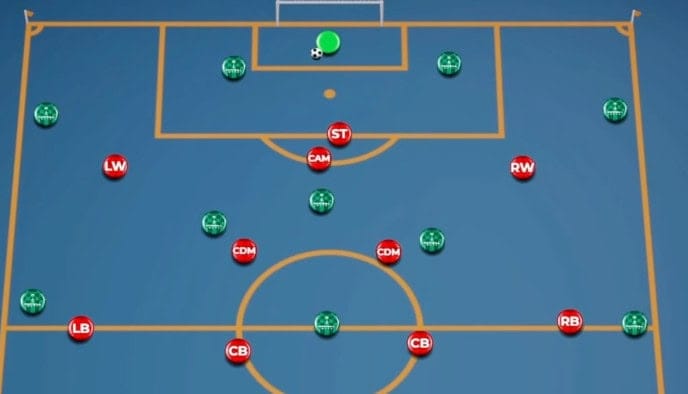
The first line of defence, typically involving Müller and Kane, forces opponents to play wide, where they can be contained by the fullbacks and midfielders.
This strategy limits the opponent’s options and often leads to turnovers in favourable positions.
Tactical Insights for Opponents
While we have talked only about Bayern Munich’s strengths on offence, this aggressive attack does create a few potential areas of weakness that a cunning opponent could capitalize on.
To counter Bayern Munich’s aggressive style, opponents could consider several strategies:
Exploiting Spaces:
Teams should look to maintain an extra player in advanced positions (blue boxes in images below), ready to exploit spaces left open by Bayern’s high press.
This tactic could disrupt Bayern’s formation and create scoring opportunities on the counter.
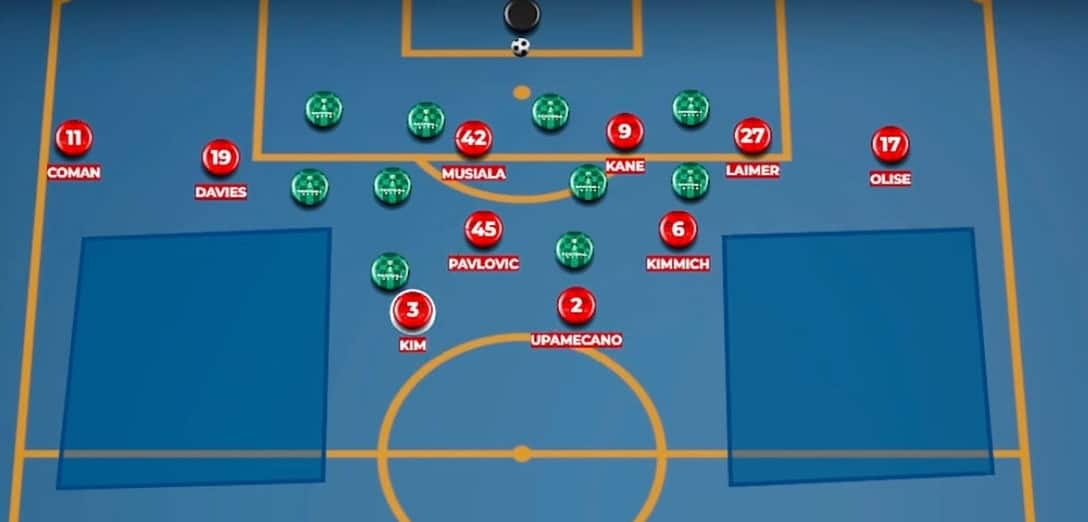
Shifting Play:
Instead of committing to one flank, opponents should aim to circulate the ball effectively, using diagonal passes to switch play.
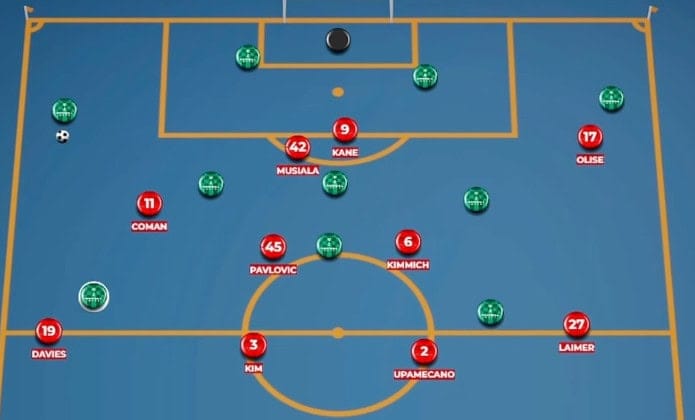
This can stretch Bayern’s defence and create gaps for attacking players, opening up the diagonal pass.
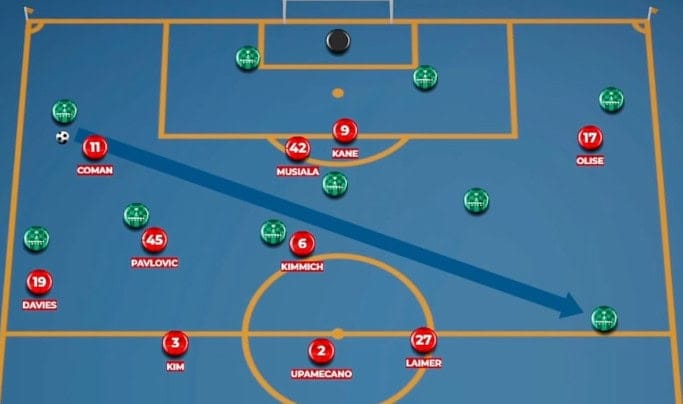
Utilizing Goalkeeper in Build-Up:
Engaging the goalkeeper in play can relieve pressure and open up passing lanes, allowing teams to move the ball more freely.
This tactic can be particularly effective if executed with precision.
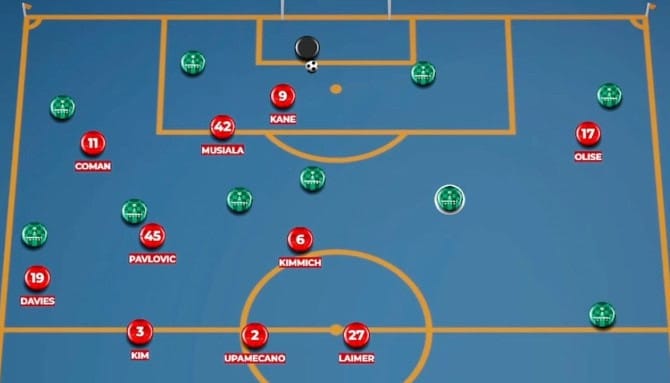
Conclusion
Bayern Munich’s tactical evolution under Vincent Kompany has led to a potent offensive strategy characterized by rapid transitions, fluid player movements, and a well-coordinated press.
While their attacking prowess poses significant challenges for opponents, understanding their structure and identifying weaknesses can provide teams with opportunities to disrupt their flow.
As the season progresses, it will be intriguing to see how both Bayern adapts and how opponents strategize to counter such a dynamic force in European football.





Comments